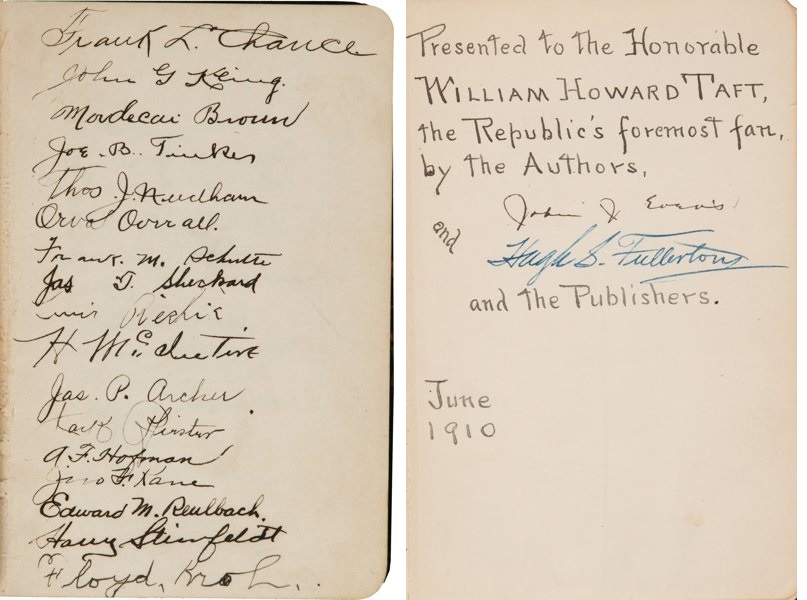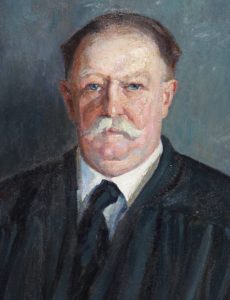
By Jim O’Neal
It took William Howard Taft time to actually realize he was president of the United States. He told close friends that anytime someone said “Mr. President,” he would look around expecting to see Teddy Roosevelt. Or when he read headlines that the president and a senator had a meeting, his first thought was, “I wonder what they talked about.”
Of course, anyone who succeeded TR would inevitably seem dull and uninspired, but the 6-foot-2 Taft, with his walrus moustache and 300-pound girth, was so ponderous, it exaggerated the differences. Although Roosevelt had retired, his presence hovered beyond the door of every room, and he was the unseen figure at the conference table when Taft sat in council with his political associates.
During Roosevelt’s years in the White House, the American people had come to expect the president to be in every edition of the daily newspapers. Taft made little effort to promote himself, virtually ignoring the press. When they complained, Taft dismissed it, saying he had been elected by the people, not the press. He intended to give his news in speeches directly to the people, not in releases to journalists. (He would have loved Twitter, like you know who).
That was not the only difference between the presidential styles.

Taft was slow and soft-spoken and believed the time had come to work behind the scenes for “affirmative legislation.” Taft also held the law sacred, while Roosevelt had not hesitated to stretch it if necessary. Roosevelt used diplomacy to strengthen national power, while Taft viewed national power as an asset to be used in diplomacy. The “Big Stick” of Roosevelt yielded to Taft’s “Dollar Diplomacy” to help American commerce worldwide.
Suddenly, it was no longer the Roosevelt White House.
Even Mrs. Taft made her mark in a hurry. Helen Herron Taft, born in the first year of the Civil War, was 47 at the time of the election. Quick-witted and energetic, she was less a charmer than him and more of a pusher when it came to having her way. Unlike most other first ladies, she was politically savvy and influenced her husband’s activities in all major decisions.
Mrs. Taft had spent time observing the White House during the Roosevelt years, and knew how to make needed changes. During Taft’s governorship of the Philippines, she had learned at Malacañan Palace, with its 125 servants, that a strong administrative structure would free her from daily household obligations. No previous first lady brought experience of that sort to the White House. She had unlimited personal freedom and used it liberally.
Alas, time zipped by and Taft proved ill-equipped to cope with the political patronage. Worse, he committed the error of angering Roosevelt – the man who had literally put him in the job – and TR wrecked the Republican Party to prevent “Big Bill” Taft from having a second term. Upon leaving the White House, the 55-year-old Taft accepted an appointment as a law professor at Yale and then finally was granted his lifelong dream of being on the Supreme Court (appointed by Warren G. Harding). When Chief Justice Edward White died, Taft was swiftly appointed Chief Justice.
“All’s well the ends well.”
 Intelligent Collector blogger JIM O’NEAL is an avid collector and history buff. He is President and CEO of Frito-Lay International [retired] and earlier served as Chairman and CEO of PepsiCo Restaurants International [KFC Pizza Hut and Taco Bell].
Intelligent Collector blogger JIM O’NEAL is an avid collector and history buff. He is President and CEO of Frito-Lay International [retired] and earlier served as Chairman and CEO of PepsiCo Restaurants International [KFC Pizza Hut and Taco Bell].
